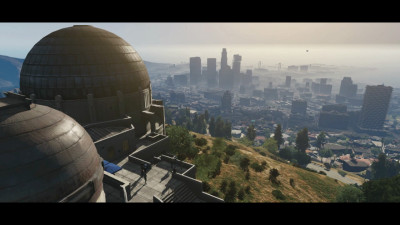Independent games (more commonly known as 'indie games') are games that are created by small teams or sometimes even individuals without financial support of publishers - they often rely on digital distribution for their funding and marketing. In contrast to more mainstream developers, indie developers do not have creative limitations and don't require approval from publishers. This means that indie games are known for their creativity and artistic experimentation. Indie games tend to be less expensive to develop, as they don't need to pay license fees. For example, to develop for Nintendo Wii, Xbox 360, or PlayStation 3 there is a license fee of between $2,000 and $10,000 (in addition to yearly developer fees and profit cuts). However, development for Xbox Live Indie Games only requires $99 per year.
The creaters of Indie games usually have a significantly smaller budget than more mainstream 'Blockbuster' games, however, the teams who create them are smaller, so less money has to be spent paying a huge team. Over the past few years, many Indie games have become very popular, some of the most successful being; Braid, Fez, World of Goo and Minecraft...
Minecraft
Developed and published by mojang, Minecraft was created by two Swedish designers - Markus "Notch" Persson Jens "Jeb" Bergenstenis - as a first-person 'sandbox' (open world) game, focused on creativity, and the building and developing of your own, in-game world. The game allows players to roam an open world, which allows them to do anything they choose and interact with anything they like. It requires players to maintain their health, build shelter, survive attacks from mobs (creepers, zombies, skeletons etc) and mine the resources that are available in their world. This world is composed of 3D blocks which are made of materials that the players can use to their advantage. Several different modes of Minecraft exist, of which most have different aims;
Survival - In this mode, the players have a health bar which is depleted by attacks from monsters, falls, environmental damage, drowning, or falling into lava and a hunger bar, which must be maintained by eating food. By mining resources, tools and items can be crafted which can help players through out the game. Villager mobs are also in this mode, which players can trade items with. A multiplayer server can also be set up.
Classic - This mode is free, but is no longer updated. Players have access to all the unlimited resources. It functions similar to creative mode, allowing players to build and destroy any and all parts of the world either alone or in a multiplayer server. There are no computer creatures in this mode, and environmental hazards such as lava will not damage players. However, some blocks function differently since their behaviour was later changed during development.
Creative - In Creative mode, players have access to unlimited resources or items through the inventory menu, and can place or remove them instantly. Players also do not take environmental or mob damage, is not affected by hunger, and can fly freely around the game world; they can only die by breaking through bedrock and falling into the void.
Adventure - In Adventure mode, the gameplay is similar to survival mode except players are unable to break or place any blocks. The players can still interact with items, such as chests, and mechanics, such as buttons.
The game was originally available for the PC, but more recently the game has been released on platforms like Xbox 360, and even Android and iOS. As of the 25th of May, 2012, the game has sold over six million copies on PC and over nine million copies across all platforms, proving it to be one of the most successful 'indie' games so far, and this number is increasing at a large rate. Minecraft was released as a developmental "alpha" release on the 17th of May, 2009, with a beta version on the 20th of December, 2010. The game is only available for digital download. Official versions for iOS and Android have been released and the full version of the PC game was released on November 18, 2011 at 'MineCon' 2011. This convention was specifically titled 'MineCon' and was dedicated to Minecraft alone, showing how passionate people are about the game.
In December 2010, Good Game selected Minecraft as their choice for "Best Downloadable Game of 2010" title,Gamasutra named it the eighth best game of the year as well as the eighth best indie game of the year, and Rock, Paper, Shotgun named it the game of the year. Indie DB awarded the game the 2010 "Indie of the Year" award as chosen by voters, in addition to two out of five Editor's Choice awards for "Most Innovative" and "Best Singleplayer Indie". All of these awards and positive reviews prove how successful Minecraft has become.





































